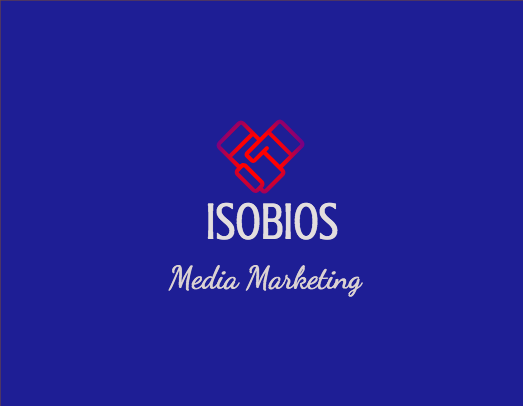
In order to stand out in the job market, as a professional, or as a business owner, identity and reputation are crucial for success. This is where personal branding comes in to play.
Personal branding is the process of building one’s reputation and inventing our identity. In order to do this, we must identify our unique strengths and values, and communicate them effectively to others.
In this article, we will explore the importance of personal branding and the key elements involved in creating and communicating our personal brand to our audience.
The Importance of Personal Branding
Someone might be considered a master networker but if their personal brand is not in check, their networking efforts might be completely wasted.
A well-crafted personal brand can result in higher visibility, greater professional opportunities, and greater job satisfaction. As a result of this, effective personal branding can help us gain professional and personal achievements and increased earning potential.
How to Create an Effective Personal Brand
Creating a personal brand that can help you achieve success is more than just being likeable or doing what is right, even though these two factors are also critical.
Here’s some ways that you can create a powerful personal brand:
Identify Your Unique Strengths and Values
Understand what makes you unique and what you can offer to an organization. This will help you create a brand that is authentic to you. Trying to change yourself to suit an organization is not a sustainable long-term solution.
Define Your Target Audience
Define who you want to reach and learn what is it that they are looking for in a professional. This will determine if they are in fact the right audience for you, and it will help you tailor your brand message if required.
Create a Personal Brand Statement
This is a brief, clear, and concise statement that summarizes your strengths and values. It should be authentic and reflect your own unique strengths and values.
Be Consistent in Your Branding
Make sure your personal brand is consistent across all platforms, including social media, professional networking sites, and your personal website. People need to be able to see you on any platform and immediately recognize who you are and what you do.
Be Authentic
Be true to yourself and your values. Be honest and transparent in your personal branding efforts. Authenticity will help you build trust and credibility with others and will help you stand the test of time. Fake or inauthentic people don’t last.
Keep it Up to Date
Regularly review and update your personal brand to ensure it aligns with your current goals and objectives and stays relevant to your target audience and industry. If you are present on multiple social platforms, ensure they are always updated and consistent.
Network and Promote Yourself
Network with people in your industry and promote your personal brand. Use your personal brand statement and other branding materials to showcase your strengths and values. Don’t confuse self-promotion with arrogance or ego. Self-promotion can be done tastefully.
Measure and Evaluate
A personal brand should be viewed as somewhat of an advertising campaign. You need to measure and evaluate the effectiveness of your personal brand and make adjustments as needed, based on results.
It’s important to remember that creating a personal brand is an ongoing process, it takes time and effort to build and maintain a strong and effective personal brand.
With consistent effort, you can create a personal brand that can open new doors, increase your visibility and lead to personal and professional success.
Tap into the Power of Mindfulness to Win Your Day!
If we stopped to analyze our lives daily, we’d discover that most of our days are almost ‘carbon copies’ of each other. We engage in the same activities over and over giving scant regard as to whether what we’re doing is helping us or hurting us.
This is why we gain weight, overspend, get addicted to social media and so on. These problems didn’t occur overnight. They’re the result of repeated behaviors over a prolonged period.
Since human beings are creatures of habit, it’s normal to go through our day on autopilot and we only stop to think about something if it’s not the norm. Even our diets don’t have as much variety as we think.
If you kept an hourly journal where you recorded everything you did every hour, you’d be amazed at how similar your day-to-day life is. Similarly, if you kept a food journal for a month, you’d see eating patterns – and the list of foods you consume are the usually the same.
Isn’t that amazing?
Yet, we don’t realize it because our life patterns have become second nature to us.
-
Why change is necessary
Now that you’re aware of your ‘pattern’, you’ll understand that most of the results in your life are because of your daily patterns.
If one is overweight, they most probably have a less than desirable eating pattern. If they’re unfit, their daily life is probably sedentary.
Those who wish to earn more may be stuck at a job they go to daily that doesn’t pay much. If their marital life is uninspiring, very often, there’s neglect and a lack of communication.
As the days pass, these daily actions become more ‘cemented’ in their lives and the adverse effects become more visible.
The ONLY way to change these results and do better will be to change their daily actions – and the best way to do that is with mindfulness.
-
How to use mindfulness
Mindfulness is a simple concept and all it requires you to do is to step out of ‘autopilot’ mode and be AWARE of what you’re doing daily.
If you want to effect change in your life, you must change.
But when will you change… and how?
Plan what you’ll do differently each day and be mindful of following through on your plan.
For example, if you decide to clean up your diet, being mindful will mean asking yourself if the food on your plate is helping or hurting your goal.
Just this one simple step of asking yourself if you’re eating the right foods will stop you from mindlessly eating. You’ll analyze your food decisions better and will be aware of how your current decision/s will impact your future results.
This mindfulness principle applies to every area of your life that you wish to change. Ideally, you should only aim to change 1-2 habits at a time. This will require less mental energy from you to stay mindful.
-
Other pointers to bear in mind
Initially, it’s inevitable to slip up. Mindfulness is a skill. You’ll need to practice it often to get better at it. So be patient with yourself.
You may want to keep a journal or a tracker to help you stay accountable. If you have a food journal, you’ll want to write in it every single time you’re about to eat something. This will force you to be mindful.
Similarly, if you decide to spend an hour with your kids daily, you’ll want to have a tracker for that too. You can check off the box every time you do it. It’s easy to get overwhelmed with work and forget this special hour with your children. With a tracker, you’ll be more aware of what needs to be done daily.
The key to making mindfulness work is to not strive too hard. The process should be one of self-love and non-judgmental in nature. You’re mindful to help yourself achieve your goals and dreams.
By practicing it daily, you’ll win the day, and when you win days… then weeks… then months and years… ultimately, you’ll have a winning life.
Embracing Change
Change is an inevitable part of life, and sometimes it can be challenging to embrace it. Whether it’s a change in our personal lives or a change in the workplace, it can be difficult to adjust to new circumstances and to see the opportunities that change can bring.
To minimize the negative effects that change may bring, humans need to understand that change is not only important but can also bring with it many benefits. With the right strategies, change can actually be a wonderful thing if we learn to embrace it effectively.
Why Embracing Change is Important
Change is a natural part of life, and it’s essential to learn how to navigate it. Change is inevitable so for those that don’t like it, change can be a negative experience. The great news is it doesn’t need to be.
It’s important to be able to adapt to change quickly and efficiently in order to stay competitive and achieve success. Embracing change also allows us to grow and develop as individuals and as professionals.
Types of Change we Might Encounter
In life and business, there’s many different types of changes that we might be forced to embrace. In difficult times especially, it can be helpful to identify and understand the different types of change that we might experience.
Structural Change
This type of change involves changes to the organizational structure, such as re-organizing departments or creating new roles. Structural change is quite often required to improve efficiency, adapt to new market conditions, or better align with strategic goals.
Process Change
Changes to the way work is done, such as implementing new systems or procedures, is known as process change. Process change can be necessary to improve efficiency, reduce costs, or increase quality.
Technological Change
Technological change involves the adoption of new technologies, such as automation or artificial intelligence. Highly relevant in today’s fast paced and high-tech society, technological change can sometimes come under scrutiny however it is necessary to improve efficiency, reduce costs, or increase competitiveness.
Cultural Change
The core values and mission of an organization are critical to create a culture of happy and engaged employees. Cultural changes are often necessary to create a more collaborative culture, which helps foster innovation and improve employee engagement.
Behavioral Change
This type of change involves changes to the way people behave, such as adopting new habits or changing their attitudes. Behavioral change is an effective way to improve performance, reduce costs, or increase safety for all involved.
Transformational Change
A transformation change is a fundamental shift in the way an organization operates. It can involve a combination of structural, process, technological, cultural, and behavioral change.
Transformational change is often required when there are significant changes in the organization such as a merger, a spin-off, or a change of business model.
Incremental Change
Taking a gradual, step-by-step approach to making small changes over time is often required where there is risk of negative disruptions or reactions to change. Incremental change can be necessary to test new ideas and gradually build momentum before making more drastic changes.
The Benefits of Embracing Change
Embracing change can bring many benefits. It can open up new opportunities, help us to develop new skills, and improve our overall well-being.
Here’s some of the amazing benefits we can reap from embracing change effectively:
Improved Performance and Competitiveness
Embracing change can lead to improved processes, products, and services, which can help a business or organization become more competitive.
Adaptation to New Market Conditions
Change can help a business or organization adapt to new market conditions, such as shifts in consumer demand or technological advancements.
Increased Innovation
Embracing change can foster a culture of innovation, leading to new ideas and solutions that can drive growth and success.
Improved Organizational Resilience
Change can help an organization become more agile and adaptable, allowing it to better withstand external shocks or challenges.
Enhanced Employee Engagement
Change can create new opportunities and challenges for employees, leading to increased engagement and motivation.
Better Decision Making
Embracing change can help leaders, managers and teams to make more informed and effective decisions by considering new perspectives and options.
Improved Stakeholder Relations
Change can also help improve relationships with key stakeholders, such as customers, suppliers, and investors, by demonstrating a commitment to innovation and progress.
Strategies for Embracing Change
Embracing change can be challenging, but there are strategies that can help make the process more streamlined and effective.
One of the most important strategies is to have a positive attitude towards change. It’s essential to see change as an opportunity, rather than as a threat.
Being open to new ideas and perspectives can help minimize the impact when the need for change arises. Change often requires us to think differently and to consider new approaches, seeing open to new ideas and perspectives can help us to adapt to change more easily.
Rather than waiting for change to happen, being proactive in seeking out change can actually help. This can help us to be better prepared for change when it does happen.
Building a support network is another great way to help us embrace change. Change can be challenging, and it’s essential to have people around us who can support and encourage us. A support network can provide the guidance and motivation we need to navigate change.
There’s no doubt that change can be challenging at times, but it is inevitable. We live in a rapidly evolving world, so change is only going to become more frequent.
The key to embracing change is to have a positive attitude and approach change with an open mind. With the right mindset and strategies, we can learn to navigate change and make it work to our advantage.





